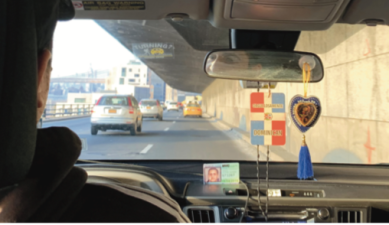What It Looks Like to Walk the Length of the BQE
Here’s a project we’re glad not to be doing (but we’re thrilled someone is). Gallery owner Robert Hult is spending today walking the route of the Brooklyn-Queens Expressway, not on the highway but as close alongside it as possible, and posting regular photos to his Twitter account.
Taken collectively, the snapshots create a real vision of not only how Robert Moses’ massive highway transforms the blocks along its ten mile path, but how the communities around it have responded to the mega-structure abutting their homes and workplaces. Going through the full collection of photos, especially in order, is well worth your time.
Many of the images look something like this, a blank wall and plenty of asphalt. Nothing pedestrian-friendly or economically vibrant here.
So close to the highway, car-oriented design dominates. The Turbo Laundry Center advertises “ample parking,” and boasts a half-block curb cut for its surface lot.
The BQE off-ramps that Hult has to pass always include a wide and dangerous crossing. At McGuinness Boulevard, the off-ramp is a traffic magnet, absolutely packed with automobiles.
But the BQE doesn’t totally dominate the communities it passes through. Here, a small garden planted alongside the depressed highway stands as an attempt by the neighborhood to reclaim the space alongside the BQE trench.
With resources, more urbanist responses to the BQE are possible. The Williamsburgh branch of the Brooklyn Public Library, shown here, sits on top of the highway, which runs in a very short tunnel at this location.
And in a city this big and this crowded, even the bleak space underneath the highway is reappropriated for public use. This cyclist is trying out his tricks in one of the few nearby locations with some room to do so.









